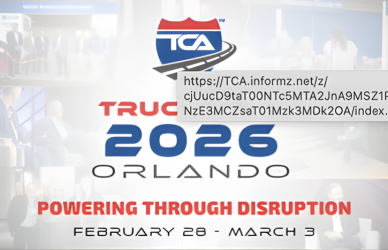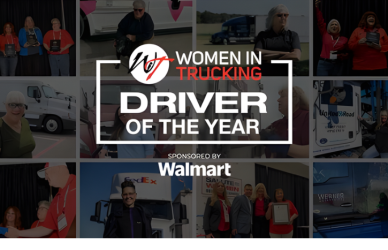The American Transportation Research Institute’s (ATRI) 19th annual Top Industry Issues report reflected that concerns surrounding driver shortages have decreased for the second year in a row. Aligning with this data is the report that driver retention has seen a 5% improvement from 2022 to 2023. Workplaces must continue their strides to create a healthy, productive workplace for CDL-A drivers, which is where the Best Fleets to Drive For program comes in.
Mark Murrell, president of CarriersEdge and co-creator of the Best Fleets to Drive For program, led a panel discussion during this year’s American Trucking Associations (ATA) Management Conference and Exhibition. The panel reviewed and discussed the trends and best practices revealed in the 2023 edition of the program.
Murrell said that the pace in the industry is accelerating rapidly, adding that the turnaround from idea to implementation has significantly shortened, going from about five years to “really quick.”
“It means the people at the forefront are pulling ahead,” he said, “and fleets need to keep moving swiftly to keep up.”
Murrell conveyed another trend: the rise of formal human resource policies and departments within fleets. In the early days of the Best Fleets program, most fleets did not have an HR department, and if they did, they lacked an HR background and did not engage with drivers.
“That has changed significantly,” Murrell said, “and they’re bringing in fresh ideas from outside of the trucking industry.”
The introduction of organizational expertise has contributed to the evolution of compensation and benefits, with a greater focus on mental health.
“We’ve added a life coach this year,” said Phil Wilt, panel member and president/COO at American Central Transport. “It acknowledges the challenges of being a driver. Our life coach addresses financial and physical aspects, as well as overall well-being and satisfaction while living on the road.”
There is an increasing emphasis on onboarding to provide a better, more impressive initial experience for new hires. Health insurance probationary periods are failing to make jobs more appealing, and there is a growing emphasis on onboarding to provide a superior initial experience for new hires. With the Best Fleets to Drive for program and its data, the onboarding process has evolved significantly.
“It’s no longer three days in the classroom; here are your keys, and hit the road,” Murrell said.
ACT made the choice to partner with a third-party firm to maintain contact with new drivers during their first six months, Wilt said. It is crucial to create strategies that are reflective of Best Fleets to Drive For scores.
Although being recognized as a Best Fleet to Drive For is a significant achievement, Jim Guthrie, Director of Operations at Prime Inc., stressed the importance of reviewing the scores with fleet leadership.
“We take the results, share them with our senior management and support team, and use them to formulate strategic plans,” Wilt said. “It could relate to driver satisfaction or compensation issues. We’re very deliberate about how we use these results.”
Guthrie said that carriers must not just analyze scores but pay close attention to the feedback provided by respondents.
“The ability to listen is one of the most critical qualities of any manager,” Guthrie said. “Our operators are astute businesspeople, and having conversations with them is rewarding.”
Murrell agreed with Guthrie and said negative feedback can be valuable if used effectively.
“You have to evaluate and act on it,” Murrell said. “Welcome the feedback. There’s always room for a conversation when addressing a problem that needs a solution.”
“Drivers are the most genuine people,” Wilt said. “It’s better to address the issue head-on than let it fester.”
Source: Commercial Carrier Journal











